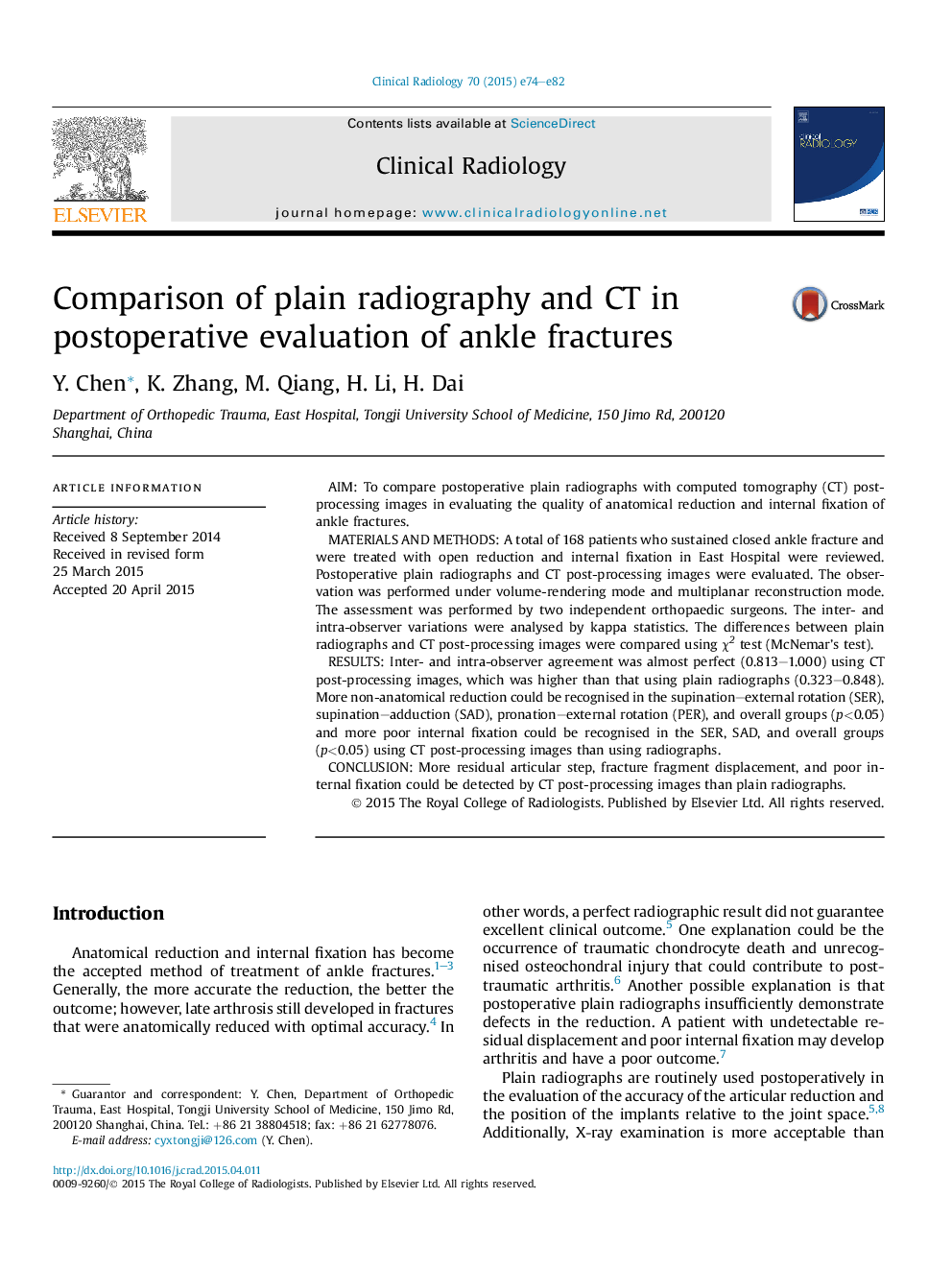| Article ID | Journal | Published Year | Pages | File Type |
|---|---|---|---|---|
| 6190824 | Clinical Radiology | 2015 | 9 Pages |
â¢We compared postoperative X-rays with CT images in ankle fractures.â¢The evaluation agreement using CT images was higher than X-rays.â¢CT images detect more residual articular steps than X-rays.â¢CT images detect more fracture fragment displacement than X-rays.â¢CT images detect more poor internal fixation than X-rays.
AimTo compare postoperative plain radiographs with computed tomography (CT) post-processing images in evaluating the quality of anatomical reduction and internal fixation of ankle fractures.Materials and methodsA total of 168 patients who sustained closed ankle fracture and were treated with open reduction and internal fixation in East Hospital were reviewed. Postoperative plain radiographs and CT post-processing images were evaluated. The observation was performed under volume-rendering mode and multiplanar reconstruction mode. The assessment was performed by two independent orthopaedic surgeons. The inter- and intra-observer variations were analysed by kappa statistics. The differences between plain radiographs and CT post-processing images were compared using Ï2 test (McNemar's test).ResultsInter- and intra-observer agreement was almost perfect (0.813-1.000) using CT post-processing images, which was higher than that using plain radiographs (0.323-0.848). More non-anatomical reduction could be recognised in the supination-external rotation (SER), supination-adduction (SAD), pronation-external rotation (PER), and overall groups (p<0.05) and more poor internal fixation could be recognised in the SER, SAD, and overall groups (p<0.05) using CT post-processing images than using radiographs.ConclusionMore residual articular step, fracture fragment displacement, and poor internal fixation could be detected by CT post-processing images than plain radiographs.
